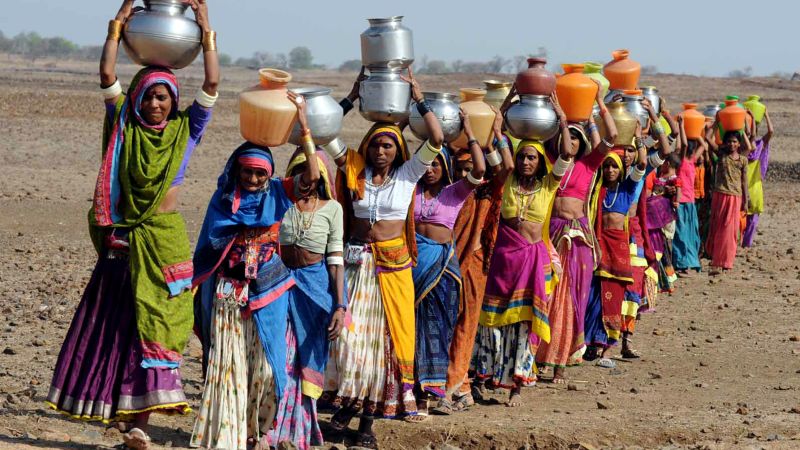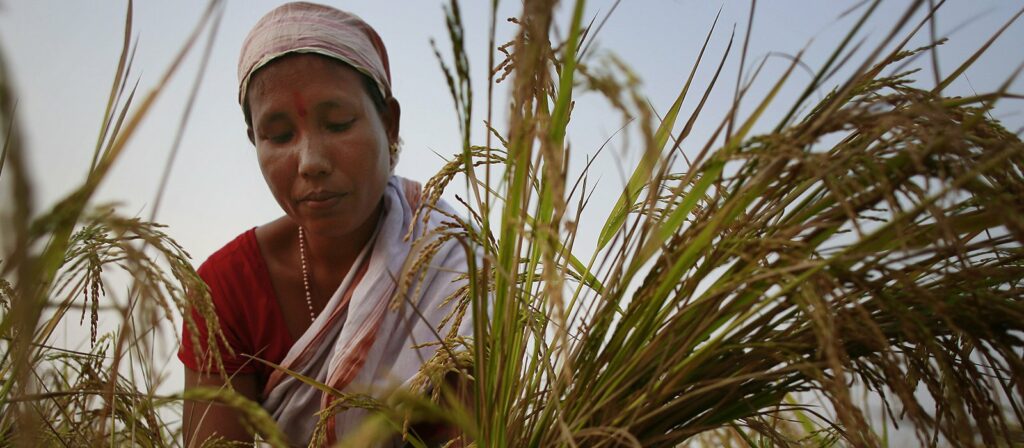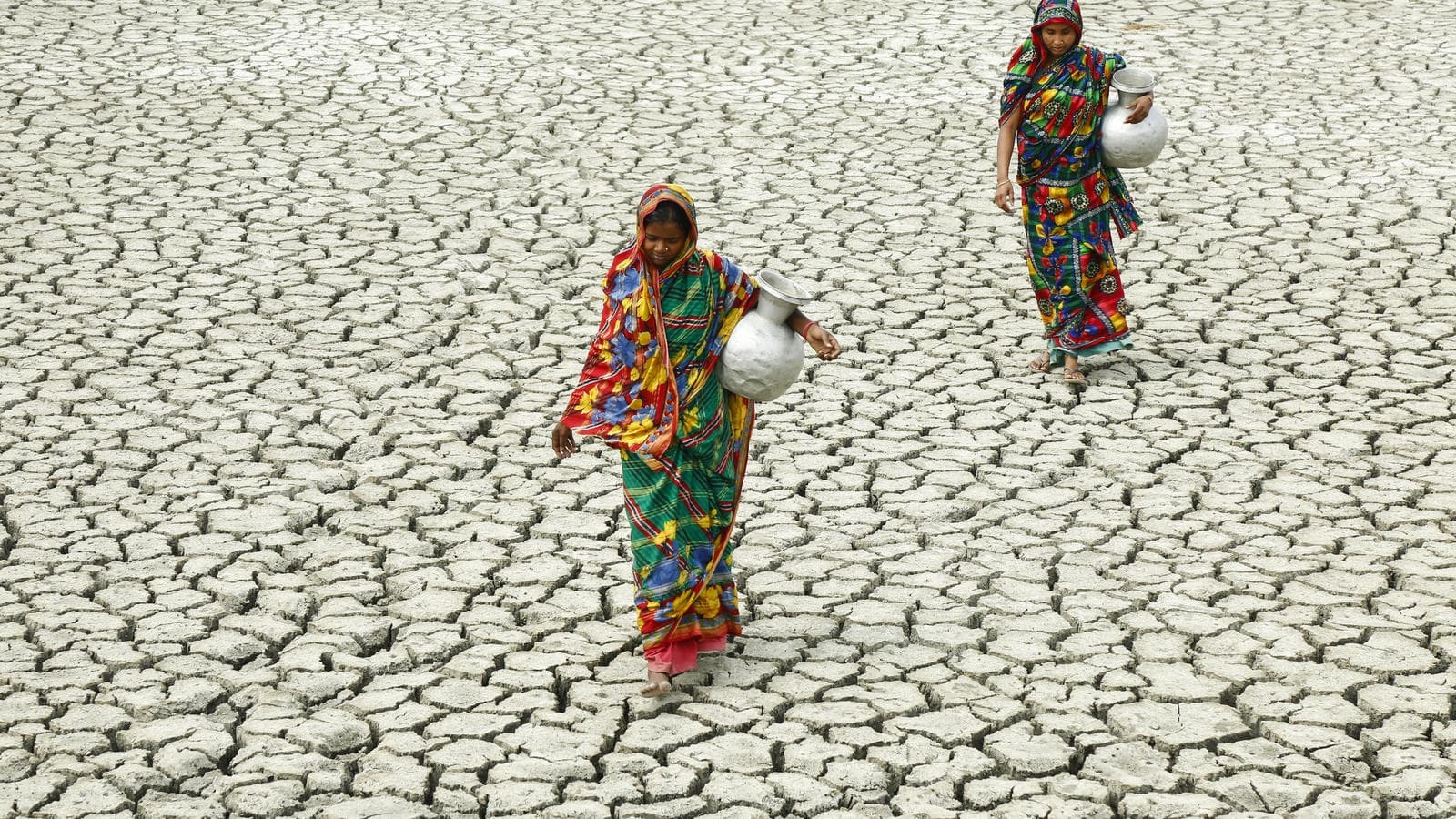Every day families around the world are forced to flee their houses, leaving everything behind in search of a better life. They risk everything to escape disasters, war, poverty, and hunger often quitting all they have, including their countries.
International agencies and forums time and again go on defining refugees as people who abandoned their native places and fled across national or international borders to find safety amid war, violence, conflict or persecution. World Refugee Convention 1951, defines a refugee as ‘someone unable or unwilling to return to their country of origin owing to a well-founded fear of being persecuted for reasons of race, religion, nationality, membership of a particular social group, or political opinion.’
Such agencies and their conventions have never taken into account the people who flee flood, drought, rising sea and temperature levels or farms with soil too saline to grow crops; ‘people displaced by the impact of climate change must be categorised as climate refugees or climate migrants,’ demand the climate activists from around the world. But the world representatives and their governments rebuff it, fearing the fact that attaching a legal code label to the issue will burden them with responsibility for this new humanitarian crisis.
The urgency for this amendment has increased as the number of people displaced by the cause of natural calamities has soared, in the first two months of the year 2023 itself, the Global Disaster Alert and Coordination System (GDACS) identified 22 major natural disasters worldwide.
India’s ongoing climate crisis
At present the northern states of India are going through severe downpours; Delhi reportedly was witnessing dire flooding. Besides, torrential rainfall in Himachal Pradesh and other high-ground states resulted in landslides and cloud bursts multiplying the volume of water bodies that are turning down the roads, houses and bridges and tossing them along. People are reportedly being relocated to aid shelters and relief camps.
It was recently that a storm after stirring the Arabian Sea, strengthened into a powerful cyclone that hit India’s western state of Gujarat and the coastland of Pakistan; the landfall caused the evacuation of nearly 1 lac people from eight coastal districts of Gujarat, relocating them in school auditorium, migrant shelters and other temporary locations. Biparjoy in motion at a speed of 15 Kilometers per hour continued to tear down more than 4600 villages of the state, before moving towards Rajasthan.

The state of Gujarat is prone to such massive cyclones hitting the coastline about three to four times a year. What made the Biparjoy different was that it was sandwiched between two anticyclonic systems, where one caused a northwest pull, while the other made it flow back. Although the causalities were low, it accounted for massive destruction, causing the toppling of electric poles, suspended fishing, abandoning of schools, and disrupting the power supply, in over 4600 villages of Gujarat.
Biased environmental crisis and migration
Looking into the impacts of climate change, it can be affirmed that nature too is distorted when it comes to the after-effects of such calamities and disasters; for there is an unequal toll for everyone. Gender, age, ethnicity and income level are among the various other factors that determine how individuals experience and are affected by environmental distress.
Rooted in the context of long-drawn gender inequality, women with children, persons with disability, and religious and caste minorities, the LGBTQI+ communities are exposed to a disproportionate risk of being affected by the impact of degrading climatic conditions worldwide. The impact of sudden hurricanes, flooding Etc and slow onset events like subsequent rise in Earth’s temperature and rising sea level have posed multifold challenges to such communities more as compared to cisgender heterosexual men, therefore, heightening the level of threats and vulnerability they are prey to, reports UN.
Gender, age, ethnicity and income level are among the various other factors that determine how individuals experience and are affected by environmental distress.
Research shows that gender and responsibilities amid the steeping economic and social inequality, and underrepresentation of women has made women vulnerable, in extremities caused by climate change and natural disaster underprivileged women are 14 times more likely to lose their lives as compared to men.
Gender disparity: Women in vulnerability to climate change
According to the United Nations, of the population people displaced owing to climate-induced factors 80 per cent are women and children; amongst them, the share of women migrants in the Global International Migrant Stock oscillates between 48 per cent and 52 per cent.
According to the International Organisation for Migration (IOM), Migration largely depends on people’s exposure to their surroundings, and the type of climatic risk they are exposed to; people coming from economically, politically and socially marginalised communities often experience the acute impact of climate change compared to others who do not. It is their capacity to anticipate, cope with, adapt, and recover from the consequences of natural hazards and environmental degradation that determines whether they choose to migrate. For women uprooted because of the Climate Crisis in developing countries like India, the situation is even more precarious.
Climate Change and its resultant migration have aggravated challenges for women in rural areas; it has increased their workload, women and girls need to walk miles to fetch water and firewood amid food and nutrition insecurity, and women and girls in these families take a disproportionate share of workload which always remain unaccounted in the household and community, their burden of reproductive work also increases aftermath of the disaster.
Although women play a major role in the production, processing and trading of agricultural produce, it is less likely for them to own, productive or financial assets to absorb the shocks and sustain through the climate abnormalities.
The studies reveal how these complexities multiply for women, especially those coming from poor and marginalised backgrounds; such women easily prey to gender-based violence, sexual harassment and abuse within households and outside with refugee women twice as vulnerable to sexual violence.
It is because of the inevitable impact of the Climate Crisis that women and girls are forced into unhygienic and unhumanitarian conditions, which exposes them to fatal health conditions like TB, brucellosis (bacterial infection transmitted via cattle and animals) PCOS Etc which remain untreated because of lack of acknowledgement and facilities while they are in transit.
Women refugees and those of marginalised communities face discrimination based on the grounds of place, race-ethnicity, religion, social status and education. They are exposed to a multitude of oppressive factors like ‘triple discrimination,’ arising out of a lack of social and legal protection and intensifying poverty-induced gender discrimination, and insecurity resulting from socioeconomic inequality. These factors advance to exclusion factors such as wage gaps, no access to shelter, especially for single women, lack of access to information, Etc.

The poorest community, one belonging to the daily wage earner group who solely depend on natural resources to meet their primary livelihood need often have the least capacity to respond to climate caused crisis like landslides, flooding, hurricane Etc impact of climate change has exacerbated the challenges faced by other marginalised group those with diverse gender identities, person with disabilities, elderly people, particularly with regard to adequate healthcare, nutrition and education, therefore, addressing the existing gender inequalities and ensuring rights for all genders and communities have become more crucial other such communities might fall prey to the heightened risk of violence and societal exclusion.
Climate refugees, migration and gender: Looking into solutions
A key tool to address climate posed challenges is to develop adequate, durable responses for such people that meet various necessities of people belonging to different age groups, the LGBTQI+ community, persons with disability Etc and analysing how existing gender inequality is shaping people’s ability to adapt to climate impacts and how they tackle their everyday challenges.
Global organisations and people’s representatives must essentially include gender considerations in international frameworks and policies related to climate change mitigation and adaptation. Forefront, teaching and emphasising disaster risk education Sendai Framework of Disaster Risk Reduction, migration discussion as well as attainment of SDG5 on gender equality for fair implementation of these policies is crucial.

Collecting, analysing and disseminating regularly sex-age disaggregated data to better understand the migration patterns and formulate more effective policies that might help in addressing barriers to equal participation and engagement of people in the community and household decision-making processes.
Migrant Women and those identifying themselves as climate refugees are powerful agents that often represent their community, and their families at the national and international levels, voicing their communities as a whole. They facilitate migration to give better lives to their children, they play a crucial role in adaptation during displacement, therefore it is very important to utilise the contribution of these women and girls and ensure that they do not fall prey to factors of triple discrimination.
Women along with the indigenous community, people with disabilities and elderly people play a vital role in addressing climate change and its disastrous impacts therefore ensuring their perspective and treating them as active agents in the mitigation of climate-induced vulnerabilities will help build on the capable solutions says IOM Study.
About the author(s)
Anupama intends to be an artist in neutral, aka a dabbler- cum-learner. Her interests lie in music, nature, stories transcending cultural boundaries, human welfare, etc. When she is not around she can be found strolling along the ghats of Varanasi. To add she has a lab- named Miley.





